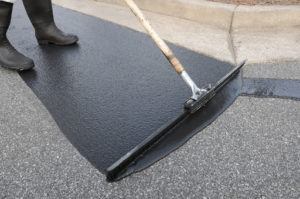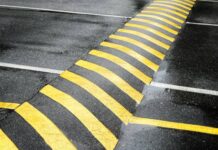Putting in asphalt pavement is an expensive investment. Thus, Seal coating is paramount to ensure that the asphalt can serve you as long as possible. However, you should note that without proper maintenance, your asphalt is likely to get damaged faster than necessary. This is because asphalt is affected by things like water, and the sun.
The sun especially is a key enemy of asphalt. When UV rays hit the asphalt, they create a chemical effect known as oxidation. During the oxidation process, light oils in the asphalt combine to form heavier oils. In turn, this reduces the number of binding oils in asphalt, causing the once flexible asphalt to become brittle and more prone to cracks and other damages. Thus to protect your asphalt from sun damage as well as the other elements, seal coating is usually highly recommended.
Seal coating is a great preservation tool that will protect your asphalt and extend its life. When it comes to applying a seal coat layer to your asphalt, you usually have two options, spray or squeegee. The question of whether to use spray or squeegee for your application is one of the biggest debates in seal coating, with each method having die-hard users that claim their chosen method is better. In this blog post, we look at these two methods, as we give you more information on them.
Spray Application for Seal Coating
 In this method, high-pressure sprayers are used to apply the sealant. When using this method, a crew will have a spray system with a tank full of sealers, and a hand wand or distributor bar for spraying the sealer. The pavement is then usually cleaned of any debris, and dried before the first coat of sealer is sprayed on. A second coat will be sprayed on after one or two hours to ensure all spots are covered.
In this method, high-pressure sprayers are used to apply the sealant. When using this method, a crew will have a spray system with a tank full of sealers, and a hand wand or distributor bar for spraying the sealer. The pavement is then usually cleaned of any debris, and dried before the first coat of sealer is sprayed on. A second coat will be sprayed on after one or two hours to ensure all spots are covered.
This method of application is faster than the squeegee method and will allow you to cover a much wider area. Furthermore, it provides you better control and precision of how much sealer is used resulting in a smooth and even finish.
Squeegee Application
In this method, a rubber blade is used to spread the sealant all over your pavement. The rubber blade can be attached to the end of a brush or a machine. Once the sealer is poured onto the pavement, the squeegee is then used to spread it out and create a smooth finish. This method is usually preferred on rough, porous surfaces, as the squeegee is used to apply pressure on the sealant spreading it into every nook and cranny in the asphalt creating a greater bond between asphalt and sealer. Furthermore, it allows for a thicker layering of sealer to be achieved.
However, this method usually takes longer to use and requires more attention to achieve an even coat. If you are not careful, you can leave behind too much sealer, resulting in patches that take longer to cure.
Dual Application for Seal Coating
As established both methods offer individual benefits, and the method you choose should depend on your situation and what you think will serve you best. Another method you can consider that has been shown to offer the best results is to use both methods. You can use the squeegee method to apply your first coat, creating a greater bond with the asphalt and filling in any hairline cracks and crevices present. Then follow up with a second coat using the spray method to ensure maximum coverage and protection. The pavement is then left to peacefully cure. The dual application method will give you the longest-lasting results.
Address
Commonwealth Paving, 136 Outerloop, Louisville, Kentucky 40214
Phone: 502-459-7283, Fax: 502-456-2678
Opening Hours
| Monday | 9:00 AM – 5:00 PM |
| Tuesday | 9:00 AM – 5:00 PM |
| Wednesday | 9:00 AM – 5:00 PM |
| Thursday | 9:00 AM – 5:00 PM |
| Friday | 9:00 AM – 5:00 PM |
| Saturday | Closed |
| Sunday | Closed |







